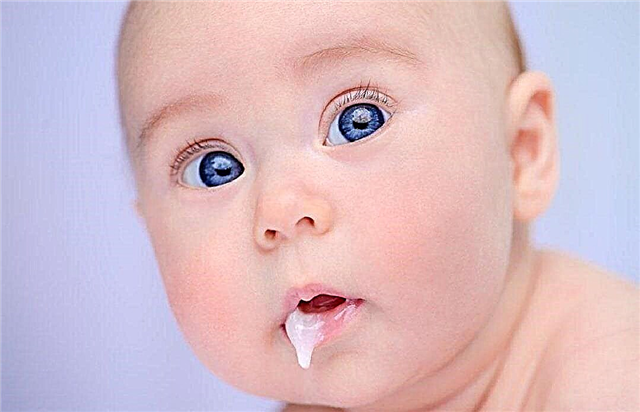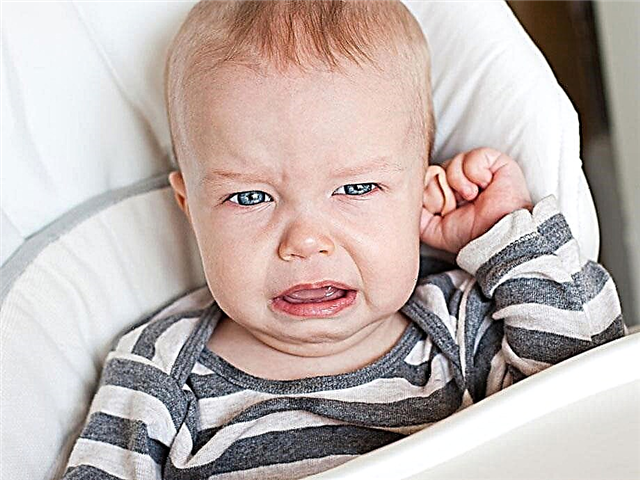
Many young mothers are interested in buying a nebulizer these days, since such a device allows you to quickly treat colds in young children without unnecessary medications at home. However, before purchasing, it is worthwhile to study in detail what such a device is used for, what it is and how to use it correctly.
A nebulizer is a device in which a liquid substance (drug solution) is converted into an aerosol. Small particles of it enter the respiratory system and are deposited on the walls of the respiratory tract. It was the formation of an aerosol similar to fog that gave the name to the device (in Latin, fog sounds like nebula).

Features:
- Most often, the nebulizer is used in children for the treatment and prevention of respiratory diseases. Also, this device can be used for nervous diseases (sleep problems, depression, asthenia) or endocrine problems (diabetes, obesity).
- A nebulizer purchased for a nursing infant includes a breathing mask and mouthpiece and a special tip. Ultrasound and compression devices are usually sold with attachments for the entire family.
- Children's nebulizer is often presented in the form of cute toys, so the treatment becomes an interesting and exciting process for the baby. A child with bronchial asthma or allergies will happily agree to “play” with an inhaler in the form of a cow or a train.
- Almost any nebulizer will help in the treatment of bronchitis and tracheitis, as well as bronchial asthma. Diseases such as laryngitis, pneumonia, or pharyngitis cannot be treated with every inhaler, and for sinusitis and rhinitis, only a few models can be used.

Kinds
Depending on the structure of the device and its functioning, the following types of nebulizers are distinguished:
Jet nebulizer device:

Ultrasonic nebulizer device:

Mesh nebulizer device:

Why does it help with respiratory infections?
Most often, a nebulizer is used for coughs and a runny nose, although the use of an inhaler for these purposes is most often not justified. Also, this device can be effective for adenoids. Sometimes it is simply irreplaceable, for example, with bronchitis or laryngitis, since the use of a nebulizer helps to quickly deliver various medications directly to the child's respiratory tract.
The drug converted into an aerosol passes almost without loss through the nasal cavity, trachea and bronchi, providing a quick healing effect. Inhalation eliminates dry throat and softens cough, promotes phlegm excretion, and also activates blood flow, which speeds up recovery.

Contraindications
It is strictly forbidden to pour an oil solution of drugs into the nebulizer, since small droplets of oil along with water vapor will enter the bronchi, causing oil pneumonia. It is very difficult to treat such a pathology.
In addition, it is not advised to put herbal decoction into the nebulizer, since such a liquid can clog the device mechanism.
What is the treatment?
Depending on the size of the aerosol particles formed in the nebulizer, the drug will settle in a specific section of the respiratory tract. For example, particles less than 2 microns will fall into the alveoli, with a size of 2 to 5 microns, the drug will settle in the bronchioles, bronchi and on the walls of the trachea. If the particle size is from 5 to 10 microns, such a drug will remain in the trachea and larynx, and a size greater than 10 microns will not allow the liquid medication to fall below the oropharynx and nasopharynx.
The drugs, sprayed into small particles, are evenly distributed over a certain part of the respiratory system, which causes a stronger and longer-lasting effect. Simultaneous ingestion of water vapor together with the drug will be beneficial for the mucous membranes. It stimulates the production and secretion of mucus, as well as enhances blood circulation and speeds up metabolic processes.

How to do inhalation?
After pouring the solution into the nebulizer reservoir, the device is closed and a mask or mouthpiece is connected to it (this depends on the model of the device). When the procedure is completed, all parts are washed with warm water and disinfected in 3% peroxide solution for 30 minutes, and then dried.
If inhalations are carried out for diseases of the upper respiratory system, it is recommended to breathe through the nose through a mask. Also, the mask should be used for diseases of the trachea, while breathing through the mouth. If you need to deliver the medicine to the lower respiratory tract, the procedure is done through a tube.

The video of the Union of Pediatricians of Russia tells about important nuances and rules for using inhalers.
How to breathe: the best recipes for solutions
How many minutes to breathe with a nebulizer?
The smaller the child, the shorter the procedure should take. Do not inhale for longer than 7-10 minutes, otherwise the next time the child may flatly refuse such treatment. In this case, it is believed that the most effective inhalations carried out before bedtime.
Can a child be given a nebulizer at a temperature?
If the child's body temperature is elevated, the use of a nebulizer is not recommended, as this can cause an additional rise in temperature. In addition, it is not advised to inhale within 20 minutes after eating, as well as to talk during the procedure.
It is permissible to carry out procedures with a nebulizer at an elevated temperature only if the child is asthmatic, he has bronchospasm, and the body temperature is less than + 38 °. It is also allowed to carry out steam inhalation with solutions from room temperature, if mineral water is used.

Is it possible to carry out the procedure for children under one year old?
The use of a nebulizer is allowed from the first days of life. Such a device will safely and quickly help cure respiratory diseases, even when the child is not yet able to take deep breaths on command. Devices for the smallest toddlers are made from soft materials.
Remember that a small child may be intimidated by the device, so first show how the procedure is performed on yourself. Let the child examine the nebulizer, hold it in his hands, press the buttons. Babies of the first year of life actively imitate an adult, so show your baby that inhalation is not scary at all.

How to choose the best one and what should you consider?
- When choosing a device for an infant, be sure to consult a pediatrician. He will assess the individual characteristics of your child and recommend the most suitable model.
- First, decide which type of inhaler is most suitable for your family. When buying a compressor model, specify which chamber is in the inhaler. If it is convective, the waste of the medicine will be higher, since the aerosol will enter the device continuously and the baby will exhale it. More economical are devices with chambers that are activated during inhalation. In such models, up to 10% of drug particles are lost.
- Find out about the capacity of the tank, and also estimate the aerosol performance of the purchased device. A high parameter will indicate a shorter duration of the procedure, which is especially important for children, because for them the difference between a 10-minute inhalation and a 20-minute procedure will be very significant.
- Consider where you will be performing the procedures to find a model with the correct cord length and hose length. Since an extension cord can be used with a short cord, pay attention to the length of the hose first.
For information on what you should pay attention to when choosing a nebulizer, see the program "Life is great!"
Prices
On the shelves you can see nebulizers in a fairly large price range. For a compression model, the price starts from 1,500 rubles, and mesh devices cost up to 9,000 rubles. The most widespread and in demand are the products of the Japanese company Omron and the British manufacturer B. Well. Prices for these devices start at 2-3 thousand rubles. The Swiss devices from Microlife are a little more expensive - from 4 thousand rubles.
Reviews
The best reviews are noted for the noiseless electronic mesh models of the usual design. You can use such an inhaler even when the child is asleep, which will help in case of his categorical refusal from the procedures.

According to surveys, some people had a nebulizer after the first obstructive bronchitis. The pediatrician advised to purchase the Omron device, and now all family members use a nebulizer for colds. The procedures make breathing easier and after them the phlegm is very good.
To make it easier for the child to sit during the procedure, parents often include cartoons for him. If breathing becomes hard, add lazolvan to the saline solution. On the advice of a doctor, inhalations are sometimes carried out with a few drops of eucalyptus solution.
Many, after the onset of complications with ARVI, acquire a compression nebulizer (for example, Microlife Neb 100). It makes a lot of noise, but the device is reliable. After a couple of inhalations of "lazolvan + saline" antibiotics were not needed.
Many parents believe that such a device should be in every family with children.

Alternatives: Which treatments will have the same effect?
If the child has a common cold or seasonal viral infection, there is no urgent need to purchase an inhaler. You can replace the device using a ladle or bowl of hot water, over which the child will breathe, covered with a towel. However, in the case of a tendency to obstruction or bronchial asthma, such alternative procedures cannot replace a nebulizer.
Why you shouldn't do inhalation with mineral water, including Borjomi, see the next video.
You can find out the opinion of the authoritative pediatrician E. Komarovsky about choosing an inhaler by watching the following video.



